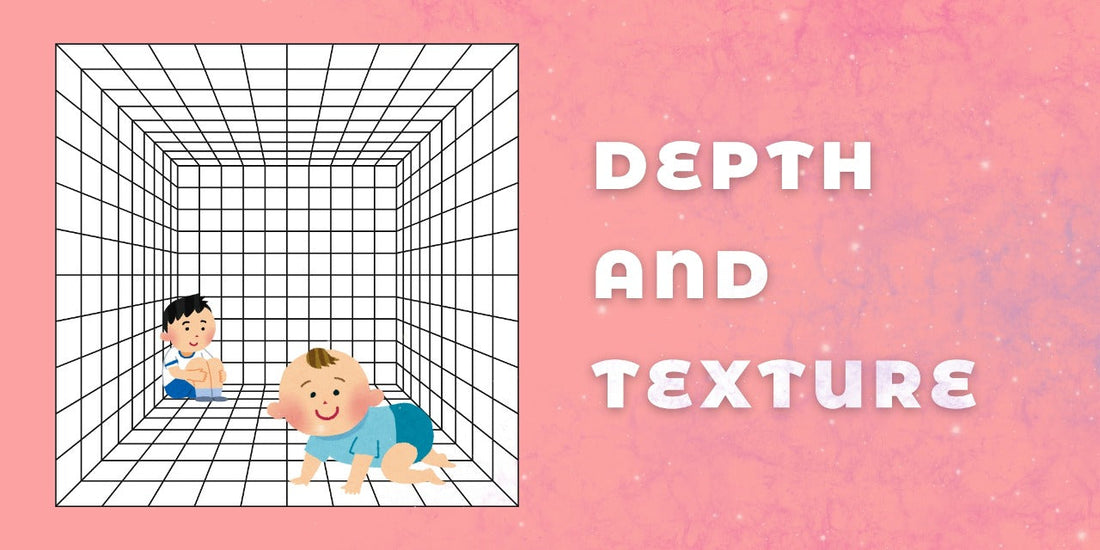Today, we’re going to learn how to add some dimension and texture to your colorings, those details that turn the simple shape into beautiful artwork. Whether you’re coloring intricate mandalas, whimsical creatures, or expansive landscapes, the techniques you’re about to learn are going to bring your pages to life and dimension in the sense of real life and visual wealth.

Adding depth and texture to your coloring pages
Why Depth and Texture Transform Your Coloring
Before we get into the how-to, let’s talk about why depth and texture matter. Coloring isn’t just about filling spaces with color—it’s about storytelling through your choices. Depth gives your designs a three-dimensional quality, making flat shapes feel rounded, layered, and full of volume as if they could leap off the page. Texture, on the other hand, adds a sense of touch—think of the roughness of tree bark, the softness of a kitten’s fur, or the sleek shimmer of a fish’s scales. Together, these elements make your pages more engaging, turning a relaxing hobby into a creative adventure. The best part? You don’t need years of art training to master these skills—just a willingness to experiment and have fun. Let’s explore how to make it happen.
Techniques For Adding Depth And Texture
Adding depth and texture is not as complicated as you might think. It is actually quite simple when you understand the basics of coloring. Here are the 3 simple techniques for adding depth and texture:
Technique 1: Shading for Depth
Shading is the cornerstone of adding depth, and it’s easier than it sounds. By playing with light and dark shades, you can mimic how light falls on objects in the real world, creating the illusion of form and dimension. Imagine coloring a round apple: without shading, it’s just a red circle, but with it, it becomes a juicy fruit you could almost pick up.
To start, picture a light source—like the sun or a lamp—shining on your page. Let’s say it’s coming from the top left. The areas facing that light will be the brightest, while those turned away or tucked underneath will fall into shadow. Begin with your lightest shade in the “lit” spots—like the top curve of a petal or the edge of a leaf. Then, layer in a medium tone where the light starts to fade, and finally, add a darker shade in the deepest shadows, such as the base of a flower or under a bird’s wing. Use your pencil or marker to blend these layers gently, smoothing the transitions so the shift from light to dark feels natural.
For example, if you’re coloring a rose, pick a soft pink for the petal tips facing the light, a mid-tone pink for the middle, and a rich magenta for the shadowed folds. Press lightly with your pencil for the highlights and harder for the shadows, or switch to a darker marker for bold contrast. The result? A rose that looks like it’s blooming in 3D, with curves and depth that draw the eye. Practice on a simple circle first—turn it into a sphere—and soon you’ll be shading everything from fluffy clouds to rolling hills with confidence.
Technique 2: Color Gradation for Distance
If shading brings individual objects to life, color gradation takes your entire page to the next level by creating a sense of space and distance. This technique is inspired by how the world looks in real life: objects far away appear lighter and less detailed, while those up close are darker and more vivid. It’s perfect for landscapes or any design where you want to suggest a background and foreground.
Here’s how it works. Start with the farthest elements on your page—like mountains on the horizon or a faint sky. Choose light, unsaturated colors, such as a pale blue, soft lavender, or misty gray. These muted tones trick the eye into seeing distance, as if the air itself is softening the view. As you move closer to the foreground—think trees, flowers, or animals—shift to richer, more saturated shades like deep green, vibrant red, or bold brown. The contrast between the light background and dark foreground creates a layered effect, making your page feel expansive.
Picture a forest scene from one of our Trending Coloring pages. Color the distant hills in a faint bluish-purple, using gentle strokes to keep them hazy. For the midground trees, pick a medium green, adding a bit more detail to their branches. Then, for the bushes or deer right up front, go all in with a dark, earthy green or brown, pressing harder to make them stand out. Blend where the colors meet—like the base of the hills into the trees—for a seamless flow. This gradation not only adds depth but also guides the viewer’s eye through the scene, from the dreamy distance to the vivid present. Try it on your next nature page and watch the magic unfold.
Technique 3: Adding Texture with Stroke Patterns
Texture is where your coloring gets personal—it’s about making surfaces feel real, whether it’s the grit of stone or the silkiness of a feather. The secret lies in your strokes and the tools you wield, and with a little practice, you can mimic almost any texture imaginable.
First, think about the surface you’re coloring. Fur, like on a cat or bunny, calls for short, quick, curved strokes that follow the direction of the hair—light flicks for a fluffy kitten, denser ones for a shaggy dog. Water or hair might need long, flowing strokes, smooth and continuous, to suggest movement and sheen. For rougher textures, like tree bark or a rocky cliff, try jagged, uneven lines to capture that rugged feel. Your tools matter here too: colored pencils are fantastic for fine control and subtle shading (press harder for intensity, lighter for softness), while markers lay down bold, even color for smooth areas like glass or metal. Crayons bring a unique, waxy texture—great for filling large spaces with a slightly mottled look.
You can also play with specific stroke techniques to add variety. Hatching—drawing parallel lines—works wonders for wood grain or woven fabric; layer them closer together for a denser texture. Cross-hatching, where lines intersect, builds depth for things like scales or bricks. For a sandy beach or speckled stone, stippling—tiny dots—creates a grainy effect; more dots mean a rougher surface. And for soft, smooth textures like skin or petals, try circulism—small, overlapping circles—to blend colors seamlessly. Test these on a corner of your page: short strokes for a lion’s mane, dots for a pebbled path, long lines for a flowing river. Soon, your pages will feel as rich as they look.
Bonus Tricks to Elevate Your Pages
Ready to add some extra sparkle? These bonus techniques are simple yet powerful, giving your coloring that wow-factor to make it truly stunning.
One favorite is the stained glass effect, which mimics the glow of light through colored glass—a dreamy touch for florals, mandalas, or geometric designs. Start by coloring the center of a section with a light shade, like a pale yellow or blue. Then, gradually darken as you move outward, blending into a deeper tone—say, golden amber or navy—at the edges. Use a steady hand or a fine-tipped marker to outline the borders in black or a dark shade for that classic stained-glass pop. It’s like turning a flower into a radiant windowpane.
Another trick you can try is the dots and doodles. Where a block color lacks life, use tiny patterns in another color to divide them up. Use a colored pencil and fill in a sky or a leaf in tiny dots, squiggle patterns, and zigzag patterns—blue dots and white to fill in the sky, green squiggle patterns, and red dots to fill in the festive. It's a great way to provide the picture with texture and interest and to avoid clutter. Lastly, don't forget to color the background. A white page leaves the design in limbo—fill in the background, a light peach under a bold bird, light gray under a heavy castle. Use light strokes and complements to refocus the audience's eyes on the main image and hold the whole thing together.
Tips to Master Your Craft
To make these techniques shine, keep a few things in mind. Your toolkit is key—colored pencils blend beautifully for shading and texture, markers deliver bold pops of color, and crayons add a rustic charm. Mix them up to suit your style. Start small: practice shading a circle into a ball or gradating colors on a strip of paper before tackling a full page. And most importantly, enjoy the process—ask yourself, “What do I want this to feel like today? Sleek and polished, or wild and raw?” There’s no wrong answer, just your unique touch.
Wrap-Up: Create Stunning Pages Today
With shading to provide the illusion of depth, color transition to stretch the distance, pattern strokes to weave the texture, and special tricks to put the finishing touches, you’re all you’ll require to render your coloring pages simply breathtaking. The techniques are building stones—starting from the first layer, adding the second, and voila, you build skills. Whether you’re unwinding after a long day at the office or making a gift-worthy piece, the techniques are fun and rewarding to use in each stroke.
Visit Trending Coloring to read our daily article!

